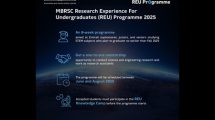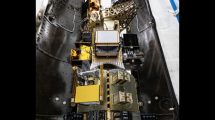 Mohammed Bin Rashid Space Centre (MBRSC) celebrates the sixth anniversary of DubaiSat-1, the first remote sensing satellite owned by the United Arab Emirates (UAE), making the first step the country has taken in its journey into the satellite manufacturing sector. DubaiSat–1 marked the occasion by taking high quality images of Burj Khalifa and Emirates Towers areas.
Mohammed Bin Rashid Space Centre (MBRSC) celebrates the sixth anniversary of DubaiSat-1, the first remote sensing satellite owned by the United Arab Emirates (UAE), making the first step the country has taken in its journey into the satellite manufacturing sector. DubaiSat–1 marked the occasion by taking high quality images of Burj Khalifa and Emirates Towers areas.
H.E. Yousuf Hamad Al Shaibani, Director General, MBRSC said: “Today marks six years since the launch of DubaiSat-1. It is a matter of patriotic pride for us that Emirati engineers participated in 30% of the building tasks when we were at the manufacturing stage, and that they have been fully responsible for its operations. Today, six years after its launch, the satellite remains accurate and maintains regular operations to date. This is a proof of the capabilities of the UAE’s engineers and the ability of the Centre to leverage the latest research and information in advanced technology and transform it into a satellite, thereby empowering the credibility of the Emirates in space science”.
He added: “Since the successful launch of DubaiSat-1, MBRSC has proven its ability and advancement in space science and continues to strengthen the position of the UAE as a global leader in this science, via ambitious projects that create value for our country, the scientific community, and humanity”.
“Our mission has been to develop our local human capital in space science, and attain expertise in the field at the local, regional and international levels. Our agenda is directly in line with the UAE Vision 2021, which promotes a knowledge-based society and economy. It also aligns with the national strategy in innovation, aiming at making the UAE one of the most innovative countries in the world in space industry over the coming seven years,” he said.
Salem Al Marri, Assistant Director General for Scientific and Technical affairs, MBRSC, who was also DubaiSat-1’s Project Manager said: “DubaiSat-1 project was the starting point of the UAE’s journey in space sciences and satellite manufacturing industry. This was evident in two important factors, the first being the launch of the satellite itself, and the second being sending a group of Emirati engineers to South Korea, forging strategic partnerships with specialized companies in the field to transfer knowledge and experience in the field. We are today fully capable of manufacturing satellites with 100% Emirati workforce, and our human capital is taking the lead in all steps of the Hope Probe project.”
Al Marri added: “For almost ten years, the development we have achieved has gone beyond the technical aspects of satellites, the Emiratization of the sector, the required infrastructure, and building the human capital. We have reached a stage where we launched ambitious projects to explore outer space, using our own capabilities and national talents. DubaiSat-1 was the first step towards larger projects such as KhalifaSat and Hope Probe”.
Six years after DubaiSat-1’s launch from the Baikonur launch site in Kazakhstan, it is still performing with high accuracy. DubaiSat-1 is currently in its sun-synchronous polar orbit, 682km above the Earth’s surface. The satellite is fitted with systems and applications that help in urban planning, monitoring various environmental changes, assessing climate changes, like sand storms and fog, identifying the quality of water in the region and monitoring the tide in addition to supporting assistance and disaster relief missions.
MBRSC is a Dubai Government entity which aims to promote scientific innovation and technology advancement in Dubai and the UAE. The Centre works on research projects and studies related to space science, in line with the approach of the United Arab Emirates, in its quest to develop the sector and build national academic skills through it.
Among the most prominent tasks entrusted to the Centre are the design, implementation, and supervision of all phases of launching the “Hope Probe” to explore Mars. The Centre is also responsible for all projects related to satellite technology and applications and specialized projects, and advanced technical projects assigned to stakeholders. Also, the Centre provides space imaging and earth station services and support to other satellite services.
In 2009, MBRSC launched “DubaiSat-1” into space, the first remote sensing satellite. In 2013, the second satellite “DubaiSat-2” was launched, while work is underway to launch the third satellite “Khalifa Sat”, which is being built purely by Emirati engineering and expertise in the UAE.












Add Comment